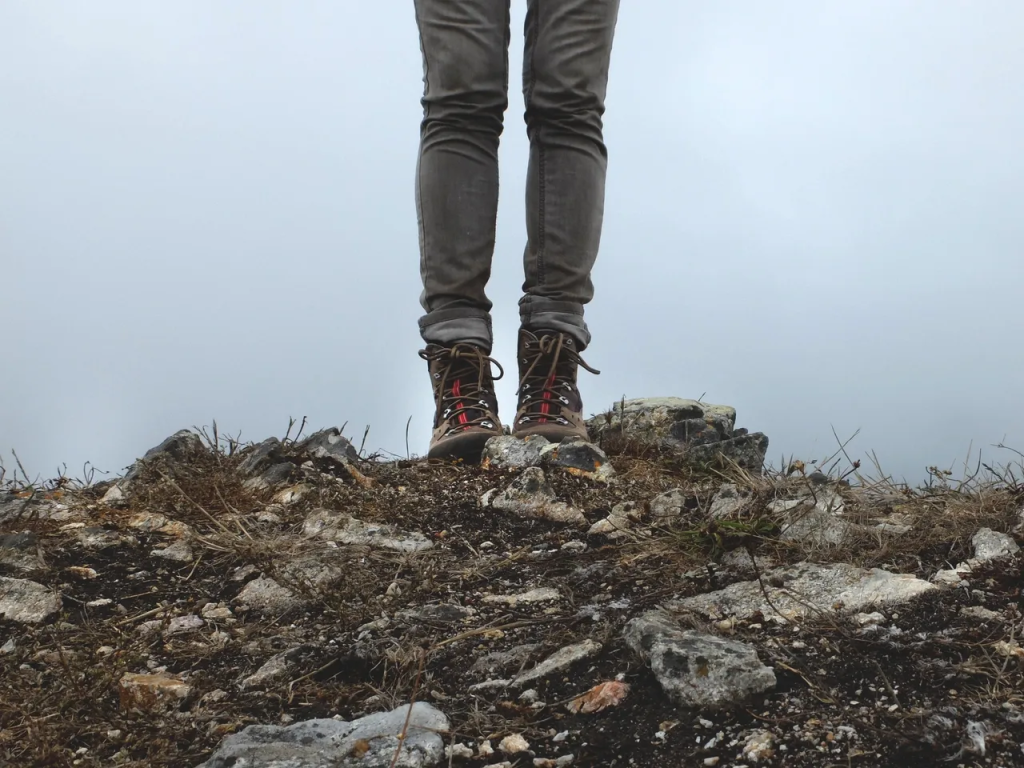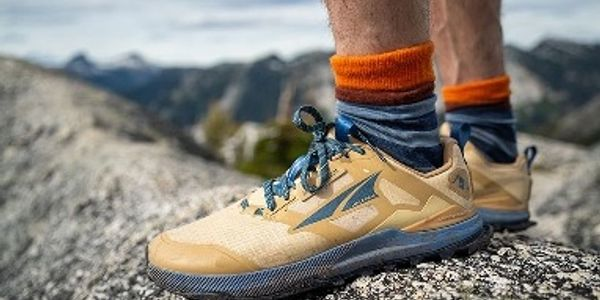That 200 MPH Wind Wasn’t a Fluke
By Cap Puckhaber, Reno, Nevada
I’m Cap Puckhaber, a marketing professional, amateur investor, part-time blogger, and outdoor enthusiast. Like a lot of you, I saw the headlines about Kirkwood Ski Resort getting blasted by 200-mile-per-hour winds and I had to read it twice. It certainly sounds like something from a disaster movie, not a California ski weekend. For years, in fact, meteorologists talked about events like this in theoretical terms, as historic, once-in-a-century anomalies. But lately, these “rare” events seem to be happening a lot more often.
That news story stuck with me because it’s a powerful, tangible sign of a shift that I’ve been feeling on the trails for the last few years. Specifically, the weather is getting weirder, more intense, and far less predictable. A forecast for “afternoon showers” can now mean a sudden, violent thunderstorm with a 30-degree temperature drop. This isn’t just a feeling, it’s our new reality. The extreme weather of 2024 consequently set the stage, and the Kirkwood event was a dramatic exclamation point. For us hikers and backpackers, this ultimately means the old rules don’t always apply. We have to adapt our strategies and gear to face a new, more volatile outdoors.
Anatomy of a Record-Breaker: What Caused the 200 MPH Winds?

The event at Kirkwood Ski Resort in January 2025 wasn’t just a big gust of wind; in reality, it was a meteorological perfect storm that shattered records. The powerful gusts, measured at the resort’s peak, were the result of a rapidly intensifying storm system known as an atmospheric river. Think of these as massive conveyer belts of moisture in the sky. According to the National Oceanic and Atmospheric Administration, for example, a strong one can move an amount of water vapor equivalent to the flow of the Mississippi River. This particular storm slammed into the West Coast, creating an incredibly steep pressure gradient over the Sierra Nevada mountains.
This pressure difference acted like a giant squeezing a water hose, forcing air to rush upward over the mountain peaks at astonishing speeds. In addition, the unique geography of the Sierras, with its narrow passes and towering granite, created a “wind funnel” effect, accelerating the already powerful winds to that mind-boggling 200 mph figure. While skiers watched in awe as snow flew sideways, the resort’s staff, of course, made the quick and correct call to shut down operations. It was a stark and unsettling reminder of nature’s power.
Why Kirkwood Matters for Every Hiker
It’s easy to dismiss the Kirkwood story as an isolated event, something that only matters to high-altitude skiers in the Sierra Nevada. That, however, is a mistake. This event is a clear symptom of a broader pattern of climate volatility that impacts every trail, from the Smoky Mountains to the Pacific Northwest. Storms are becoming more frequent and more energized. What this means for us on the ground is that the “shoulder seasons” of spring and fall are now characterized by a higher degree of uncertainty. In other words, the stable, predictable windows for hiking are shrinking. We have to be prepared for conditions that are far outside the historical norms for any given time of year.
The New Normal: What to Expect on the Trails in 2025

The extreme weather that produced the Kirkwood winds didn’t happen in a vacuum. On the contrary, it was part of the larger pattern from 2024 that has completely reshaped the landscape for our spring 2025 adventures. A record-hot summer followed by a historically cold and wet winter has created a set of challenging conditions that we must anticipate. Ignoring this setup is no longer an option for anyone who takes their safety seriously. The environment is primed for unpredictability, and as a result, our planning needs to reflect that.
The Lasting Effects of a Scorching Summer
That relentless heat from summer 2024 did more than just make us sweat; it also put significant stress on the environment. One of the biggest lingering effects is water scarcity. In many regions, particularly in the drought-prone West, the streams and springs that we’ve long relied on for backcountry water sources are likely to be lower than usual, or potentially dry altogether. This requires a major shift in how we plan our hydration, forcing us to carry more water from the trailhead and be extra diligent about filtering from any available source.
Another consequence of that prolonged heat was a population boom for pests. Ticks and mosquitoes, for instance, thrived in the hot, humid conditions. As we move into spring, we should all be prepared for a larger-than-usual presence of these insects, especially in the forests of the Midwest and Northeast. A thorough tick check at the end of each day has consequently become a non-negotiable part of my routine. It’s a simple, five-minute task that can prevent a serious health issue down the road.
A Winter of Extremes and its Sloppy Legacy
After the summer bake, winter delivered the second half of the one-two punch with record-setting rain and snowfall. This will have a direct and messy impact on our spring trails. For those of us who love hiking in the mountains, it means the snowpack will linger much longer into the season. In fact, trails that are typically clear by May could easily require winter gear like crampons and an ice axe well into June or even July. This isn’t just an inconvenience; it also changes the entire risk profile of a hike.
That massive snowmelt also means our rivers and streams will be dangerously high, cold, and fast-moving. A simple creek crossing that was a bit of fun rock-hopping last year might now be a serious and risky undertaking. This heightened level of water on the landscape can furthermore lead to trail washouts and flooding in low-lying areas, forcing last-minute changes to our plans. Being flexible and having backup routes in mind is no longer just good advice; it’s a fundamental part of modern trip planning.
Your Gear: The First Line of Defense Against Unpredictability
In this new era of volatile weather, your gear is more than just equipment; it’s your personal safety system. A gear failure on a calm, sunny day is a minor annoyance. But when a sudden storm rolls in and the temperature drops 30 degrees, the quality and appropriateness of your gear can be the deciding factor in whether you have a memorable story or a dangerous epic. My philosophy has since shifted from packing for the weather you expect, to packing for the weather you could get.
Building a Foundation from the Feet Up
I learned a hard lesson about footwear early in my backpacking career: “water-resistant” is not the same as “waterproof.” After a miserable day with soaked, blistered feet, I vowed never to make that mistake again. I now rely exclusively on high-ankle, waterproof hiking boots from proven brands like Merrell or Salomon. They provide the ankle support I need on uneven terrain and, most importantly, they keep the mud and water out. The aggressive, lugged outsoles are also critical for maintaining traction on slick, slippery trails.
Just as important as the boots are the socks inside them. I cannot stress this enough: do not wear cotton socks. Cotton acts like a sponge, absorbing sweat and moisture and holding it against your skin. This, of course, is the fastest way to get debilitating blisters. For this reason, I only hike in merino wool socks from companies like Darn Tough or Smartwool. They are masters of moisture management, wicking sweat away from your skin, and they have the incredible property of continuing to insulate even when they get damp.
Dressing for a Four-Season Day
The key to comfort and safety in unpredictable weather is a versatile layering system. This approach allows you to constantly adapt to changing conditions by adding or removing clothes. I always start with a moisture-wicking base layer made of merino wool or a synthetic fabric. This layer’s only job, after all, is to move sweat off my skin. Over that, I’ll have an insulating layer, like a fleece jacket or a lightweight down puffy. Finally, my outermost layer is my shell, a high-quality rain jacket that is both waterproof and breathable. This system keeps me dry from both rain and sweat. I always stick to quick-drying synthetic pants for the same reason; they don’t absorb water and become heavy.
The Stability Tools: Trekking Poles
For me, trekking poles are as essential as my backpack, especially in the spring. On muddy, slippery terrain, for instance, they provide two extra points of contact that drastically improve balance and prevent falls. They also take a huge amount of strain off your knees, which makes a world of difference at the end of a long day with a heavy pack. When you encounter one of those high, fast-moving stream crossings, poles are furthermore invaluable for probing the depth of the water and maintaining your stability in the current.
When the Forecast is Wrong: How to Handle a Sudden Storm

No matter how much you plan, there will be a time when the weather turns on you unexpectedly. I was on a multi-day trip in the Great Smoky Mountains, for example, when a forecast of scattered showers morphed into a full-blown thunderstorm. The temperature plummeted, and the trail turned into a river. In those moments, panic is your enemy. Indeed, having a clear, pre-planned set of actions is what keeps a bad situation from becoming a dangerous one.
Your First Move: Stay Dry at All Costs
The second you feel the weather turning, stop what you are doing. Don’t tell yourself you’ll wait until it’s raining harder. Instead, pull out your rain jacket and rain pants and put them on immediately. Your number one priority is to keep your insulating layers from getting wet. Once your clothes are soaked, your body starts losing heat at an alarming rate. While you’re putting on your gear, also do a quick mental assessment of your surroundings. Is there any natural shelter nearby, like a rock overhang or a dense cluster of trees? If the storm seems particularly severe, with high winds or lightning, it might then be time to start thinking about setting up your tent for better protection.
Winning the Battle Against the Cold
Once you are shielded from the rain, your next focus is on staying warm. This is where your layering system really shines. Add your fleece or puffy jacket under your rain shell to trap your body heat. Don’t be shy about using the gear in your pack, either. Your sleeping bag is a powerful tool for rewarming. If you are hunkered down in your tent, for example, get inside your sleeping bag to warm up. Don’t forget about your head and hands; specifically, put on a warm hat and gloves to prevent heat loss from your extremities.
Fuel the Fire: Energy and Hydration
Your body burns a tremendous number of calories when it’s fighting to stay warm. It is therefore critical that you keep feeding it. This is not the time to ration your food. Instead, continuously snack on high-energy foods like nuts, chocolate, and energy bars to keep your internal furnace running hot. It’s also vital to stay hydrated, even though you might not feel thirsty in the cold. If you are in a safe, sheltered spot, firing up your stove to make a hot drink or a warm meal can be a huge physical and psychological boost.
The Most Important Skill: Knowing When to Turn Back
This is often the most difficult decision a hiker has to make. Our instinct, of course, is to push on and complete our objective. But in the backcountry, pride can be a dangerous thing. You must constantly evaluate the conditions and your own physical state. Is the storm getting worse? Is anyone in your group showing signs of hypothermia? It is always better to turn back and try again another day than to push forward into a dangerous situation. I once had to abandon a summit attempt less than a mile from the top because of an approaching lightning storm. In hindsight, it was a frustrating decision, but it was unquestionably the right one.
Planning for the Unplannable
Successful spring hiking in this new era of weather volatility is all about the prep work you do at home. Spontaneity is great, but a multi-day backpacking trip in a popular national park now requires diligent, advanced planning. Ultimately, this homework is what sets you up for a safe and successful adventure.
Navigating the Permit Process
Many of our most beloved national parks, such as Yosemite and Zion, require permits for backcountry camping. These systems are in place to protect the fragile ecosystems and, in addition, manage the ever-increasing number of visitors. Securing these permits often requires applying online months in advance, the moment the application window opens. You can find all the specific details on the official National Park Service website. Given the high probability of late-season snow and trail closures this year, it is more important than ever to have a Plan B and even a Plan C in case your primary objective is not accessible.
Real-Time Intelligence Gathering
Once you have your permit, your research has only just begun. In the days leading up to your trip, you need to become an information sponge. Check the park’s official website and social media channels for the most current trail conditions and alerts. I also find invaluable, up-to-the-minute reports from other hikers on websites like AllTrails. These personal accounts can give you information about mud, snow depth, and stream crossings that you won’t find in an official report. And never hesitate to call the park’s ranger station directly. The rangers, after all, have the most accurate information and can provide advice tailored to your specific plans. For great articles on gear and skills, I also frequently consult Backpacker Magazine’s website.
Final Thoughts: Thriving in the New Abnormal
The extreme winds at Kirkwood were a wake-up call. They are a clear signal that we are hiking in a different world now, one that demands a higher level of respect, preparation, and adaptability. The mud, the snow, and the sudden storms aren’t just inconveniences; in fact, they are the defining characteristics of modern spring adventure. By understanding these new challenges, investing in the right gear, and making conservative, safety-oriented decisions, we can not only survive but thrive in these dynamic conditions. Ultimately, the wildness is part of the appeal.
Be safe, be smart, and embrace the beautiful chaos of spring.
Now I want to hear from you. After reading about the increasing unpredictability, is there anything you’re planning to change about your own gear or hiking strategy this year? Let me know in the comments.
About the author
Cap Puckhaber is a marketing strategist, finance writer, and outdoor enthusiast. He writes across CapPuckhaber.com, TheHikingAdventures.com, SimpleFinanceBlog.com, and BlackDiamondMarketingSolutions.com. Follow him for honest, real-world advice backed by 20+ years of experience.
A Hiker’s Guide to Winter Traction and Safety
Hiking Rescues and Hiker Responsibility

Join our Mailing List
Sign up with us now and be the first one to know about our exclusive offers and product updates.
By submitting your information, you`re giving us permission to email you. You may unsubscribe at any time.
Follow Cap Puckhaber on Social Media


About the Author: Cap Puckhaber
Backpacker, Marketer, Investor, Blogger, Husband, Dog-Dad, Golfer, Snowboarder
Cap Puckhaber is a marketing strategist, finance writer, and outdoor enthusiast from Reno, Nevada. He writes across CapPuckhaber.com, TheHikingAdventures.com, SimpleFinanceBlog.com, and BlackDiamondMarketingSolutions.com.
Follow him for honest, real-world advice backed by 20+ years of experience.





